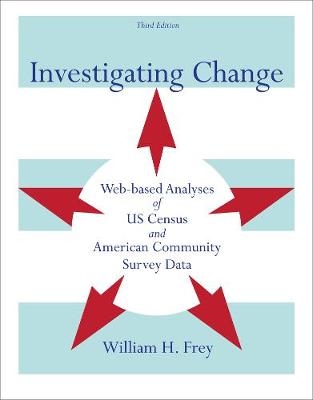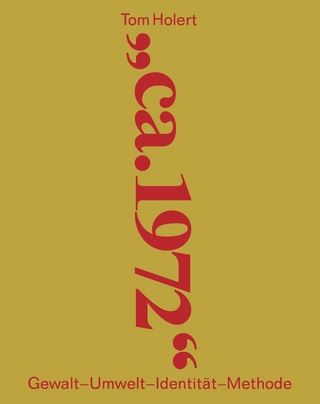
Investigating Change : Web-based Analyses of US Census and American Community Survey Data
Broadman & Holman Publishers (Verlag)
978-0-8400-3253-9 (ISBN)
- Titel ist leider vergriffen;
keine Neuauflage - Artikel merken
This workbook/website combination allows students to analyze and manipulate huge data sets drawn from 1950 through present day, with data from U.S. decennial censuses and the American Community Survey. Each chapter consists of exercises specifically tailored to data sets drawn from this current data. Students gain access to the software and data sets by using passcodes provided with each copy of the text.
William Frey is founder and director of the Social Science Data Analysis Network at the University of Michigan. Written in collaboration with Cheryl First-Bornstein, Tarek Anandan, Megan Cook & Associates of the Social Science Data Analysis Network.
PART I: OVERVIEW AND GETTING STARTED. PART II: INVESTIGATION TOPICS. 1. Population Structure: Cohorts, Ages, and Change. Key Concepts. A.Cohorts and Changing Age Structure. B.Women Live Longer. C.Baby Boomers, Xers, and Diplomas. D.Cohort Differences in Marital Status. E.Recent Immigration and Population Structure. F.Immigration, Age, and Race/Ethnicity. G.The Multiracial Population. H.Geography. Think Tank. Learning More with CensusScope.org. 2. Race and Ethnic Inequality. Key Concepts. A.Education and Race/Ethnicity. B.Occupation and Race/Ethnicity. C.Earnings Inequalities. Think Tank. 3. Immigrant Assimilation. Key Concepts. A. The Immigrant Population. B. Immigrant Geographic Location. C. Immigrant Age Structure. D. English Language Proficiency. E. Education and Assimilation F. Occupation and Assimilation. G. Earnings and Assimilation. Think Tank. 4. Labor Force. Key Concepts. A. Overall Trends. B. Men's Labor Force Participation. C. Women's Labor Force Participation. Think Tank. 5. Marriage, Divorce, and Cohabitation. Key Concepts. A. Marital Trends. B. Marriage Choices. C. Divorce. D. Cohabitation Think Tank. 6. Gender Inequality. Key Concepts. A. Educational Attainment. B .Occupation and Gender. C. Education and Occupation. D. The Gender Gap in Earnings. Think Tank. 7. Households and Families. Key Concepts. A. Household Trends. B. Non-family Households. C. Married-Couple Families D. Male and Female-Headed Families. E. Housing and Households. Think Tank. 8. Poverty. Key Concepts. A. The Race/Ethnicity of Poverty. B .Households and Poverty. C. Gender and the Feminization of Poverty. D. Age and Poverty. E. Education and Poverty. F. Geography of Poverty. Think Tank. 9. Children. Key Concepts. A. Total Child Population. B. Race/Ethnicity, Immigration, and Children C. Family Structure. D. Economic Well-Being of Children. E. Children in School Think Tank. 10. The Older Population. Key Concepts. A. Getting Older. B. Marital and Household Changes. C. Economic Situation. D. Health and Disability. Think Tank. PART III: REFERENCES AND RESOURCES.
| Erscheint lt. Verlag | 1.1.2011 |
|---|---|
| Zusatzinfo | Illustrations, 1 map |
| Verlagsort | Nashville |
| Sprache | englisch |
| Themenwelt | Geschichte ► Allgemeine Geschichte ► Zeitgeschichte |
| Geisteswissenschaften ► Geschichte ► Regional- / Ländergeschichte | |
| Geschichte ► Teilgebiete der Geschichte ► Kulturgeschichte | |
| Geschichte ► Teilgebiete der Geschichte ► Sozialgeschichte | |
| Sozialwissenschaften ► Soziologie | |
| ISBN-10 | 0-8400-3253-6 / 0840032536 |
| ISBN-13 | 978-0-8400-3253-9 / 9780840032539 |
| Zustand | Neuware |
| Haben Sie eine Frage zum Produkt? |
aus dem Bereich


